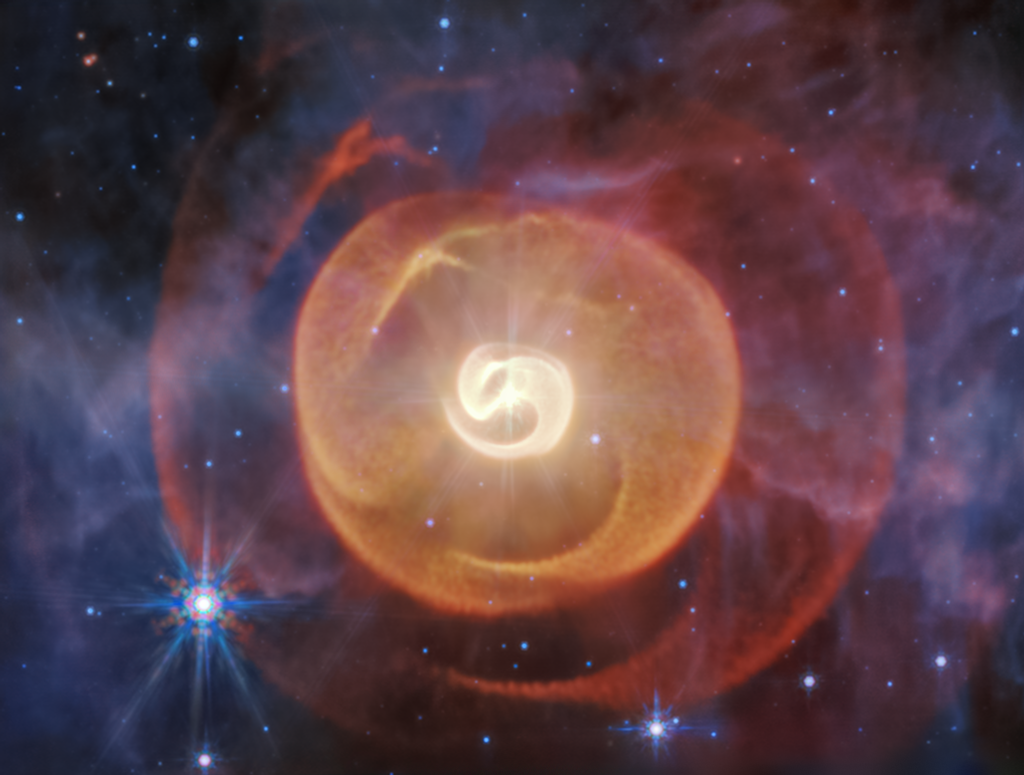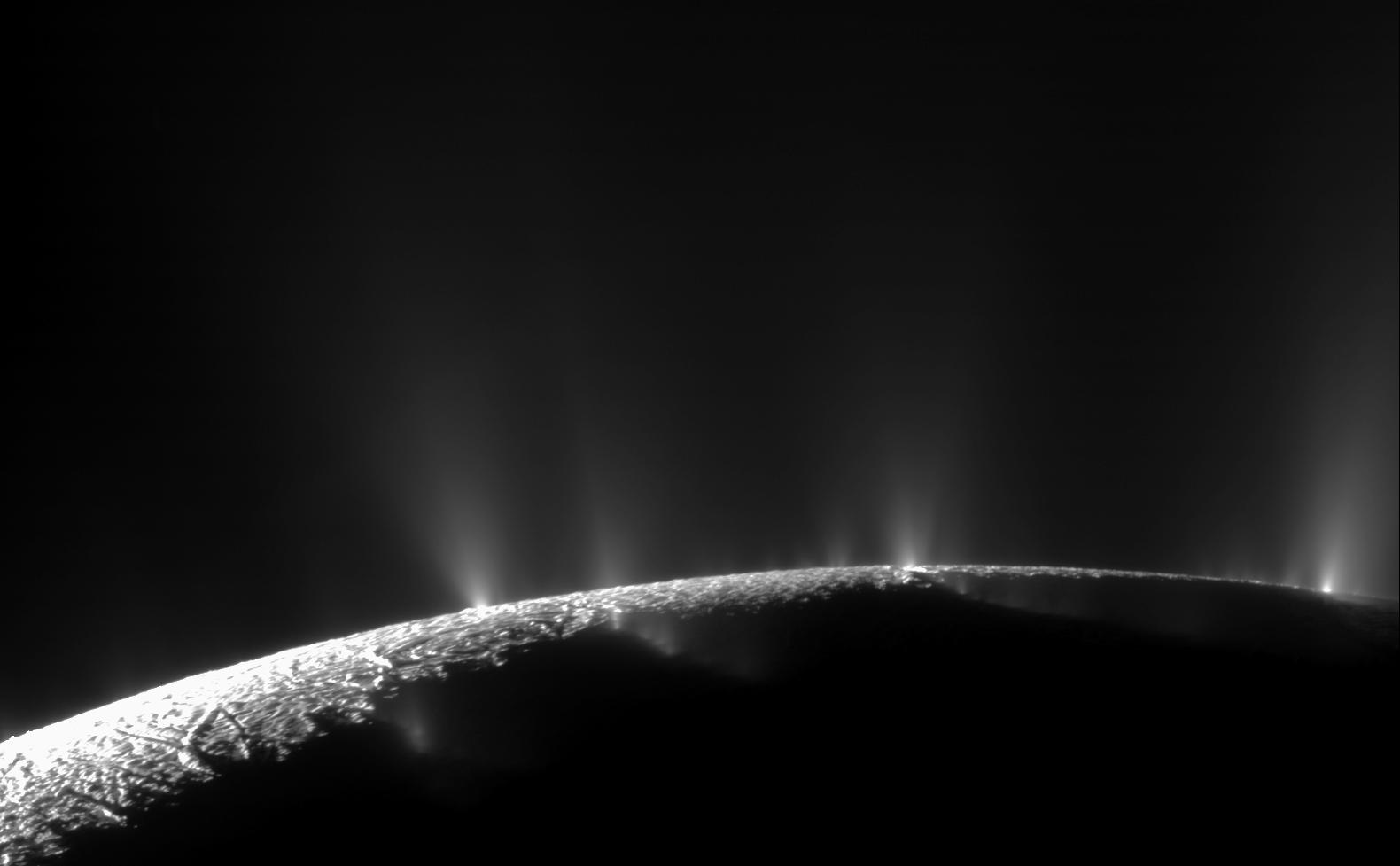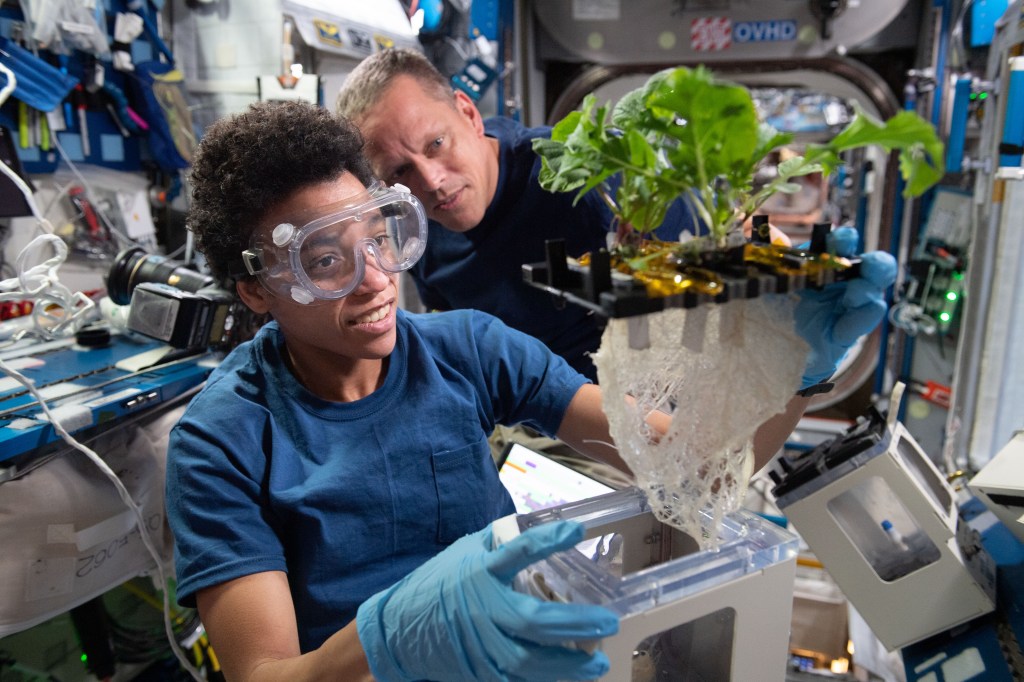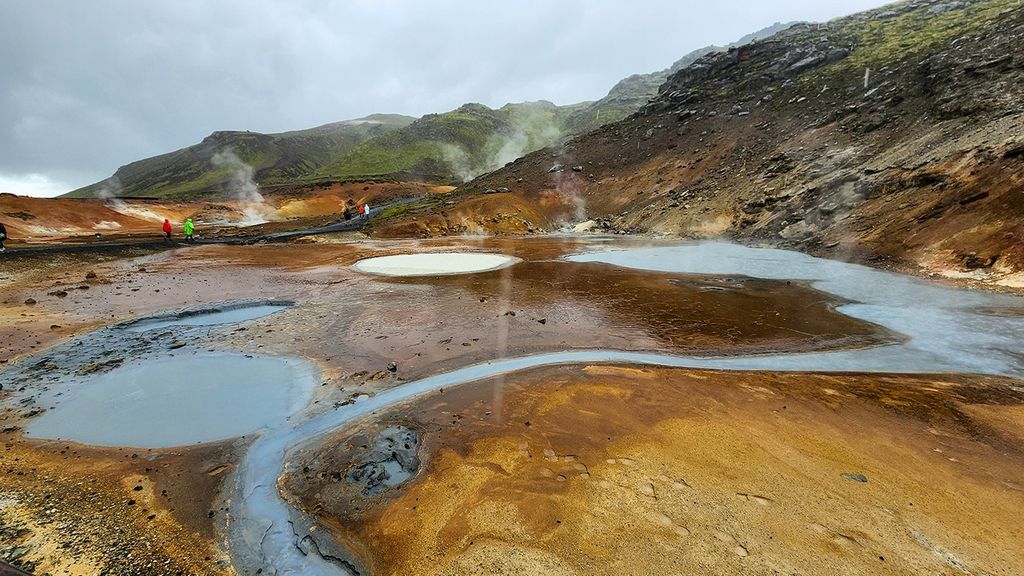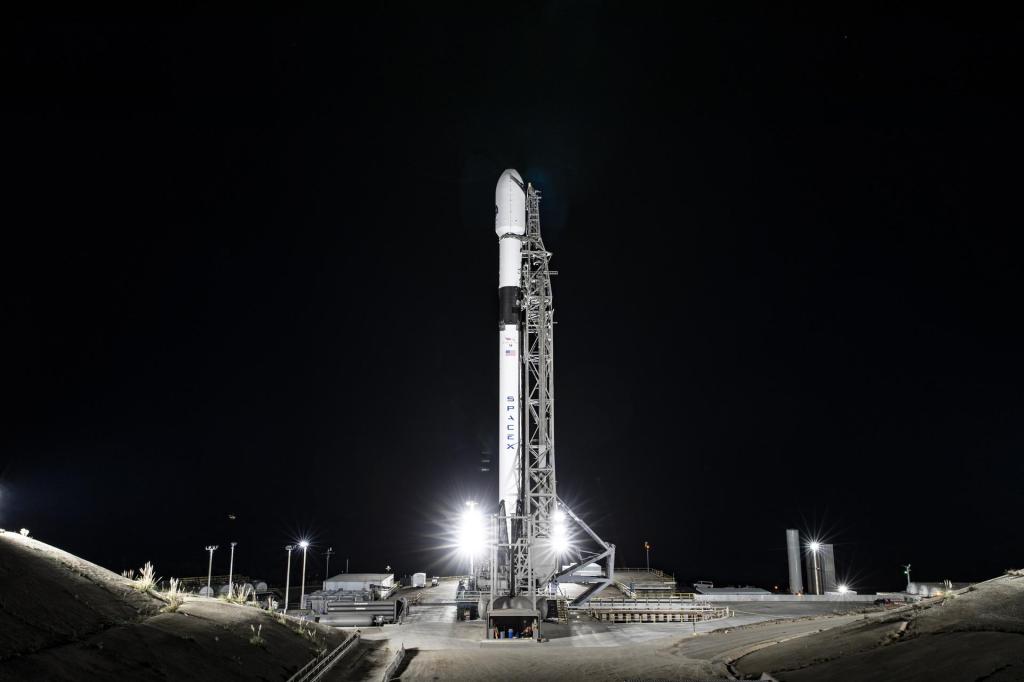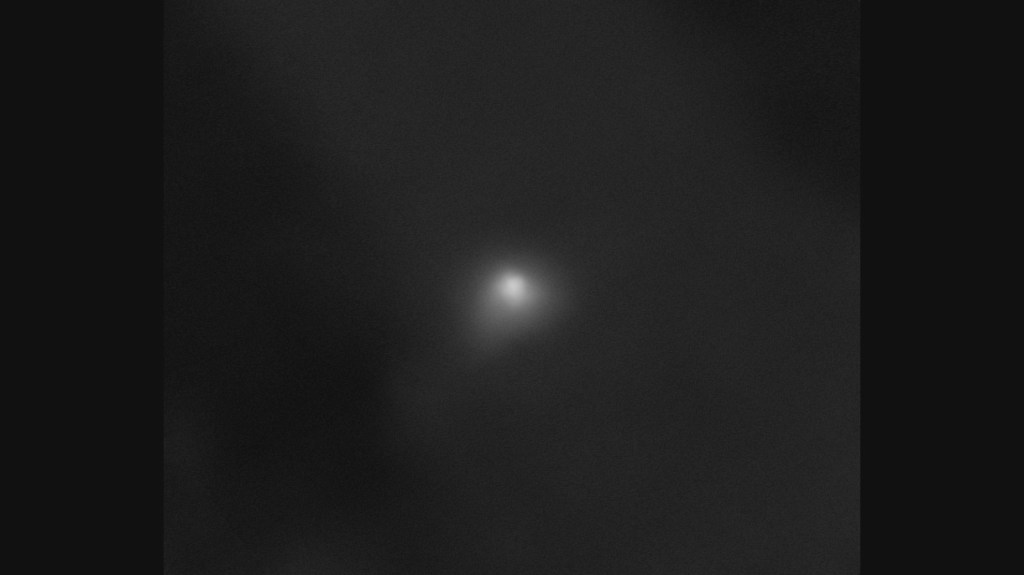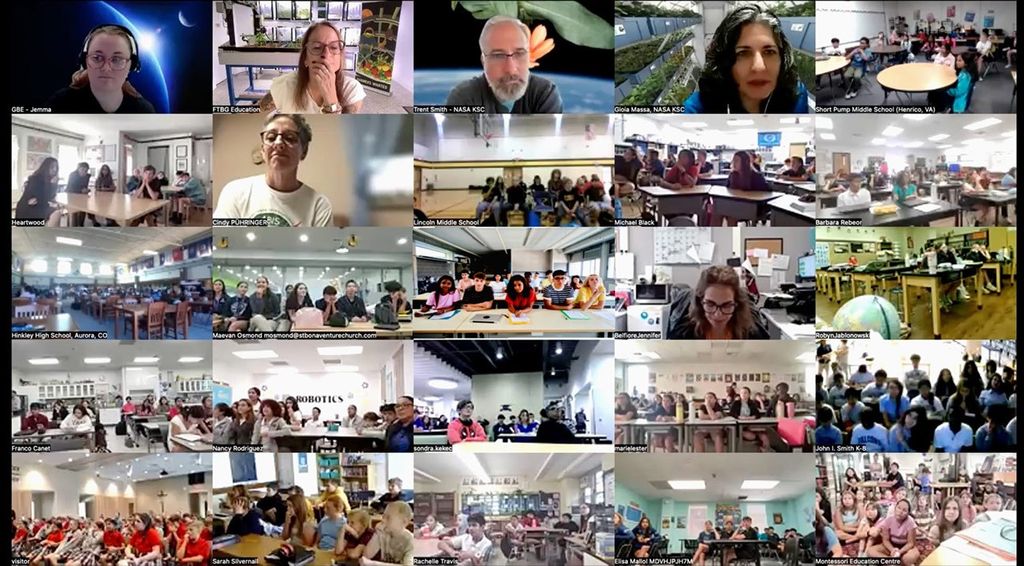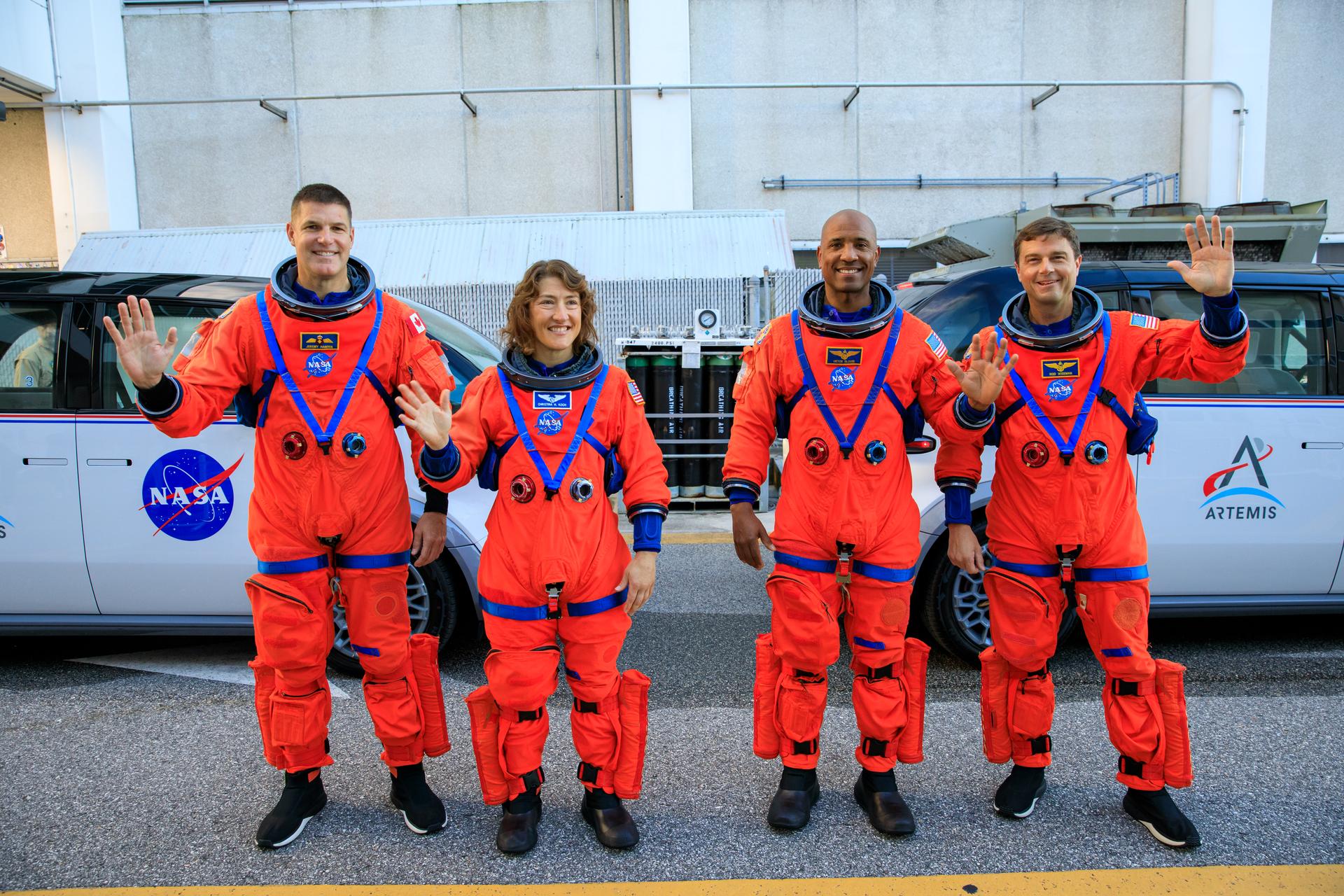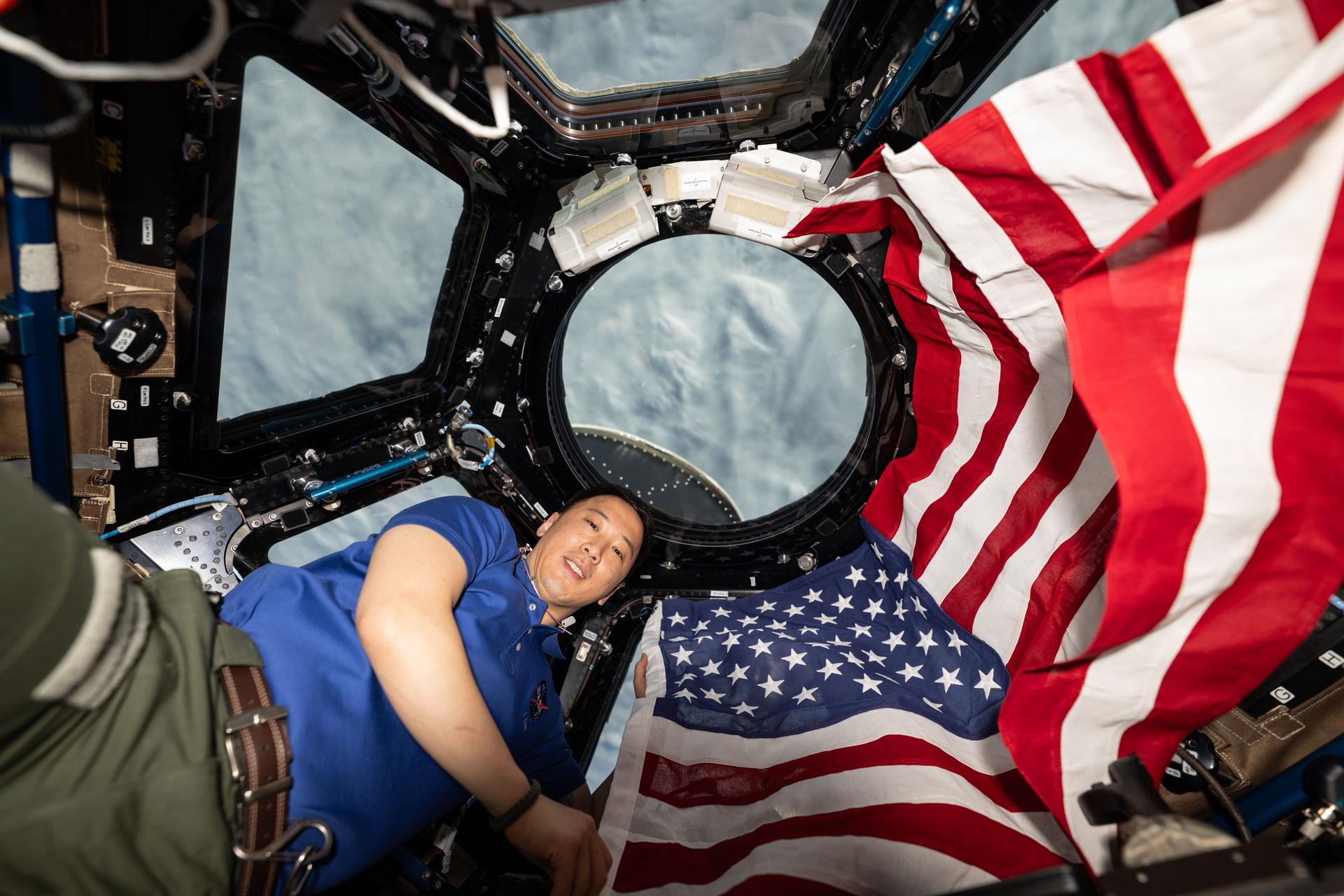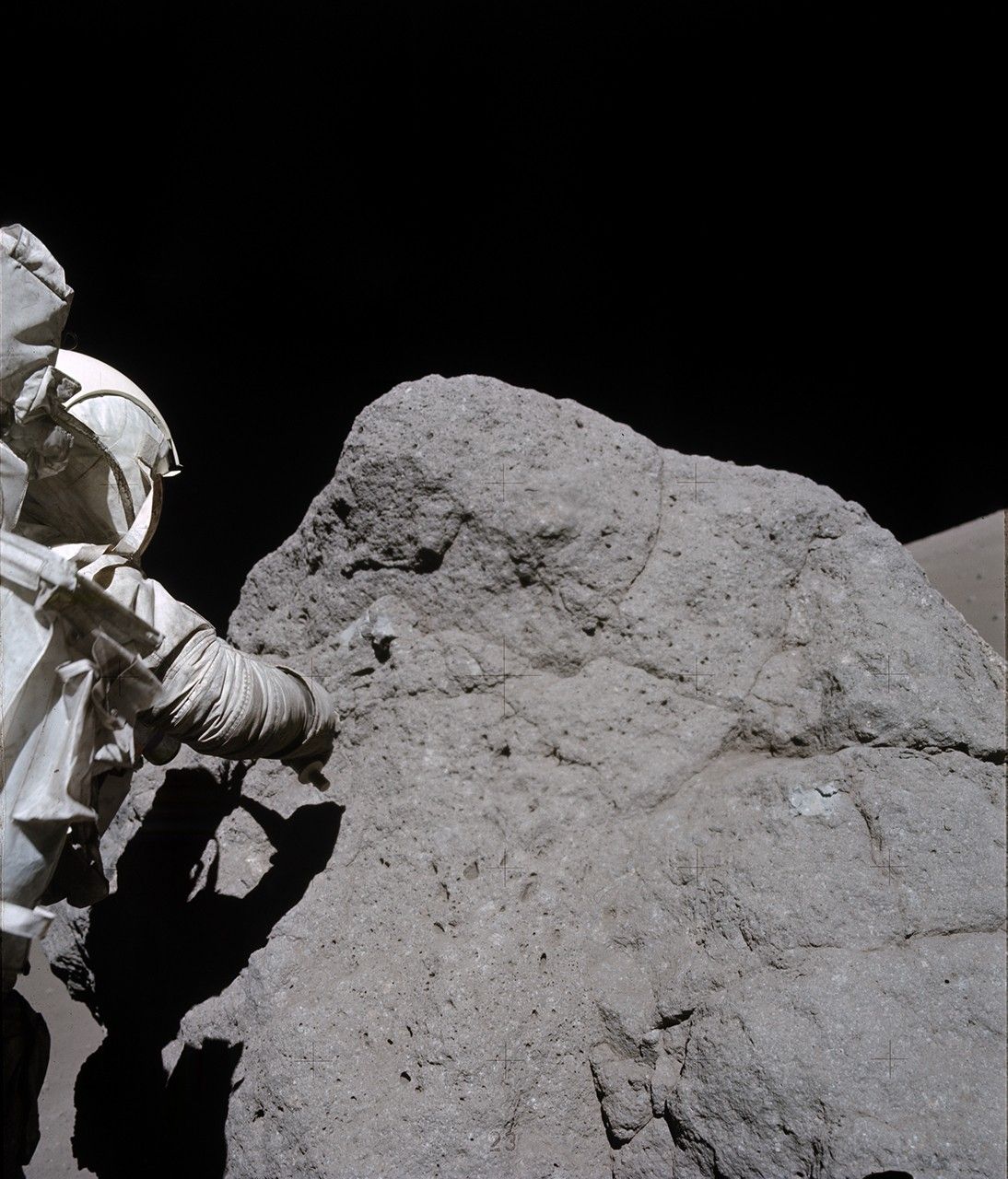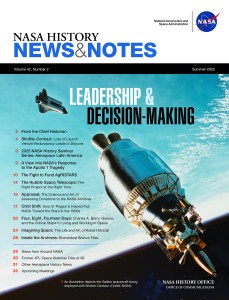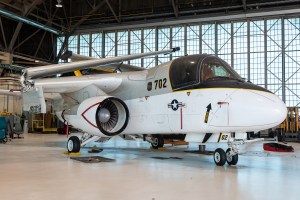On April 27, 1972, Apollo 16 astronauts John W. Young, Thomas K. “Ken” Mattingly, and Charles M. Duke successfully ended their 11-day Moon landing mission with a splashdown in their Command Module (CM) Casper in the Pacific Ocean. Recovery teams from the U.S.S. Ticonderoga (CVS-14) monitored the descent and landing and retrieved the astronauts and their spacecraft. Officials from NASA and the U.S. Navy greeted the astronauts as they stepped off the recovery helicopter. President Richard M. Nixon telephoned to congratulate them on their successful mission. They spent their first night on Earth aboard Ticonderoga before beginning the journey home to Houston. Workers removed toxic materials from Casper to make it safe for transport back to its manufacturer for postflight inspections.
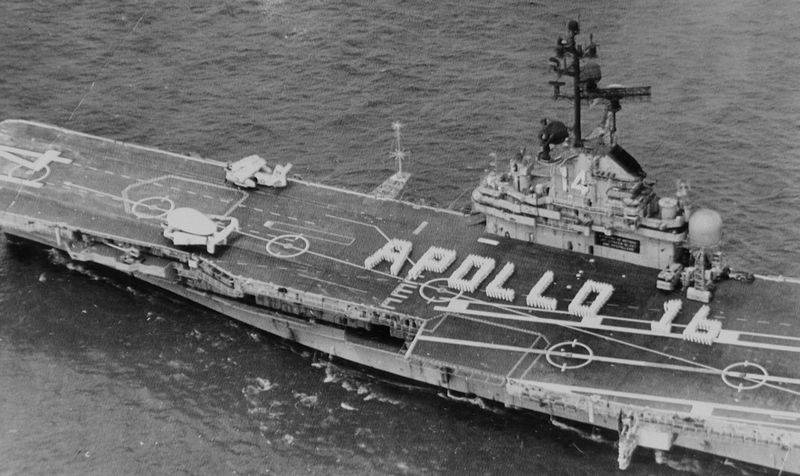
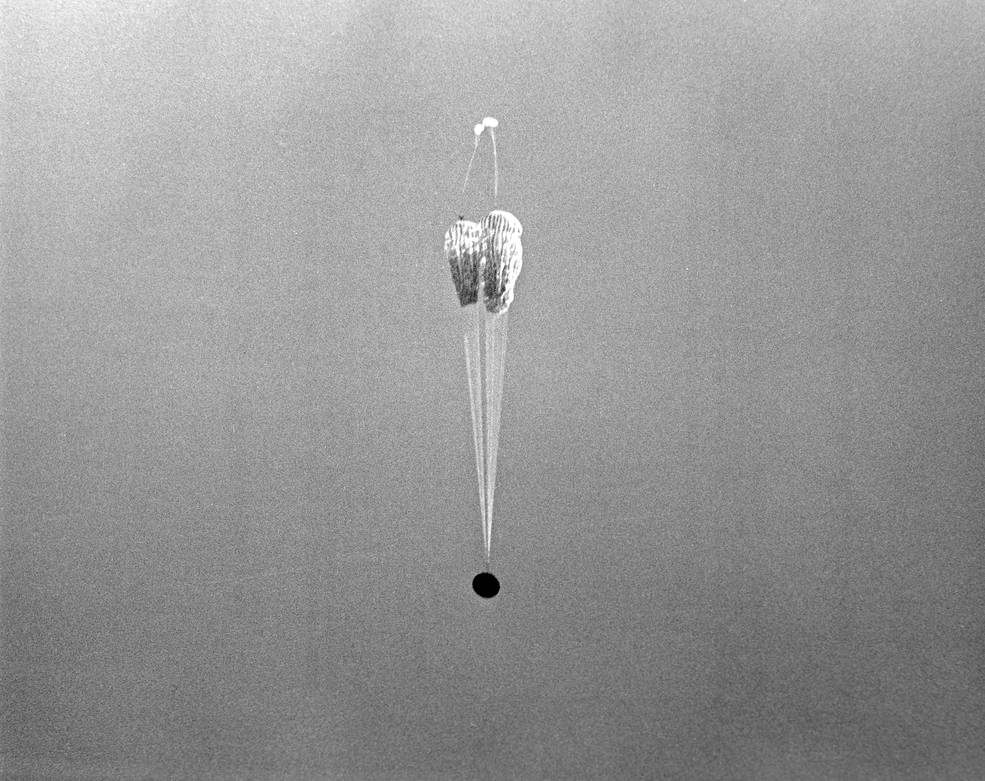
Left: Aerial view of sailors aboard the prime recovery ship U.S.S. Ticonderoga, standing in a formation spelling out “Apollo 16.” Right: Distant view from a recovery helicopter of the Apollo 16 Command Module Casper at the moment of main parachute opening.
When Young, Mattingly, and Duke awoke after their last night’s sleep in space, Casper had closed the distance to Earth to 52,000 miles and its velocity continued to increase. Out the spacecraft’s windows, the relative size of the Earth had increased but the visible portion had shrunk to a thin crescent with only about 10 percent of the planet illuminated from the astronauts’ perspective. In Mission Control at the Manned Spacecraft Center, now NASA’s Johnson Space Center in Houston, Flight Director Philip C. Shaffer and his Purple Team of controllers, including capsule communicator (capcom) Henry W. “Hank” Hartsfield took over the consoles to see the crew through to splashdown. In preparation for reentry and landing, the astronauts shut down the instruments in the Scientific Instrument Module (SIM) bay for the final time. They performed a minor course correction using the Service Module’s Reaction Control System thrusters to slightly tweak their spacecraft’s trajectory for reentry. The 4-second burn took place with Apollo 16 28,000 miles from Earth. The astronauts powered up the CM’s Reaction Control System thrusters to prepare it for its solo entry through the atmosphere and separated from the Service Module at an altitude of a little more than 3,000 miles. They maneuvered Casper so its heat shield faced in the direction of flight. The spacecraft experienced the upper layers of Earth’s atmosphere at about 400,000 feet, the point known as entry interface, at a velocity of 24,663 miles per hour. The spacecraft’s motion compressed the molecules of the thin air to create a sheath of plasma around the capsule, blocking out communications for about three and a half minutes. The astronauts briefly experienced a force of about 7 g due to the rapid deceleration.
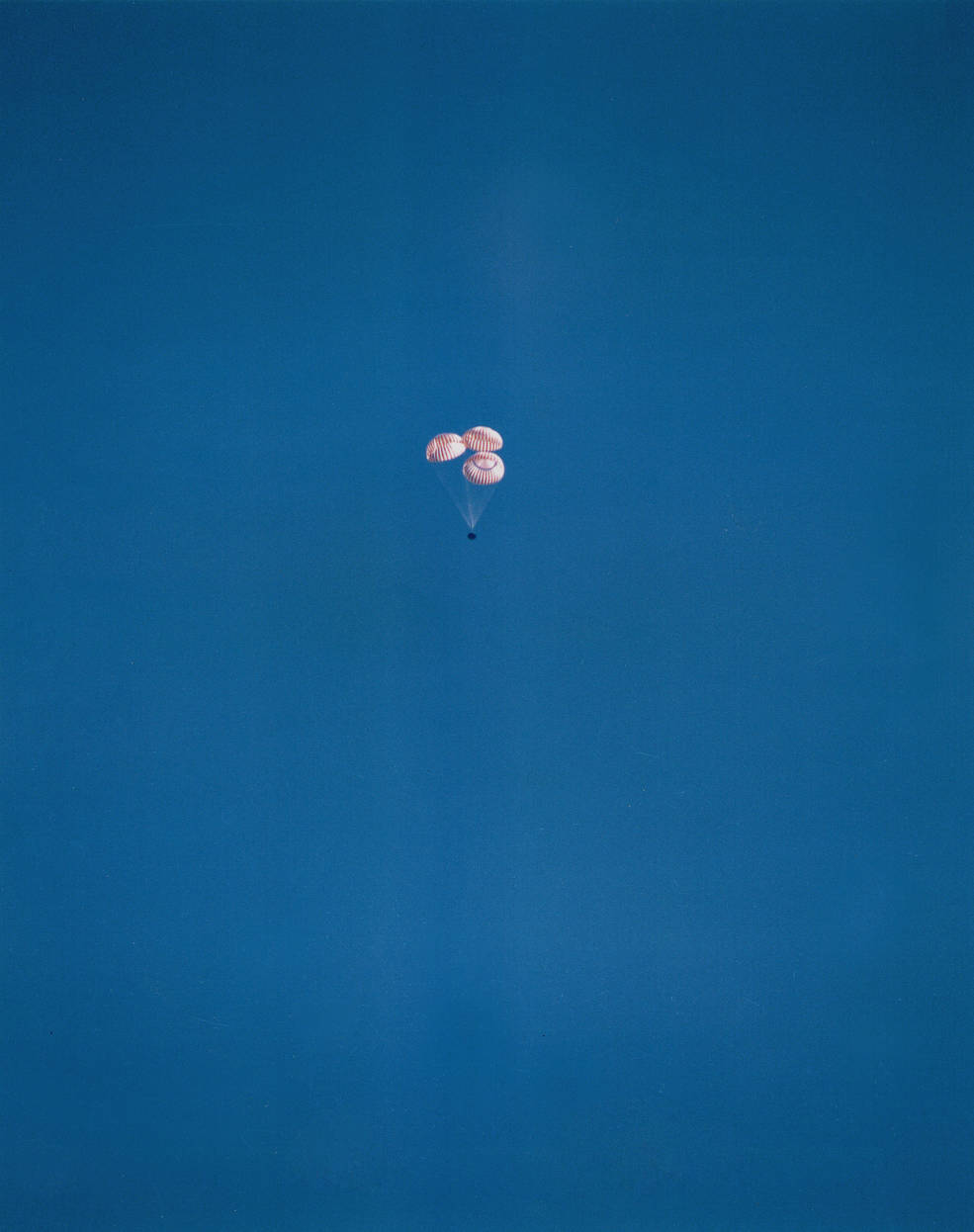
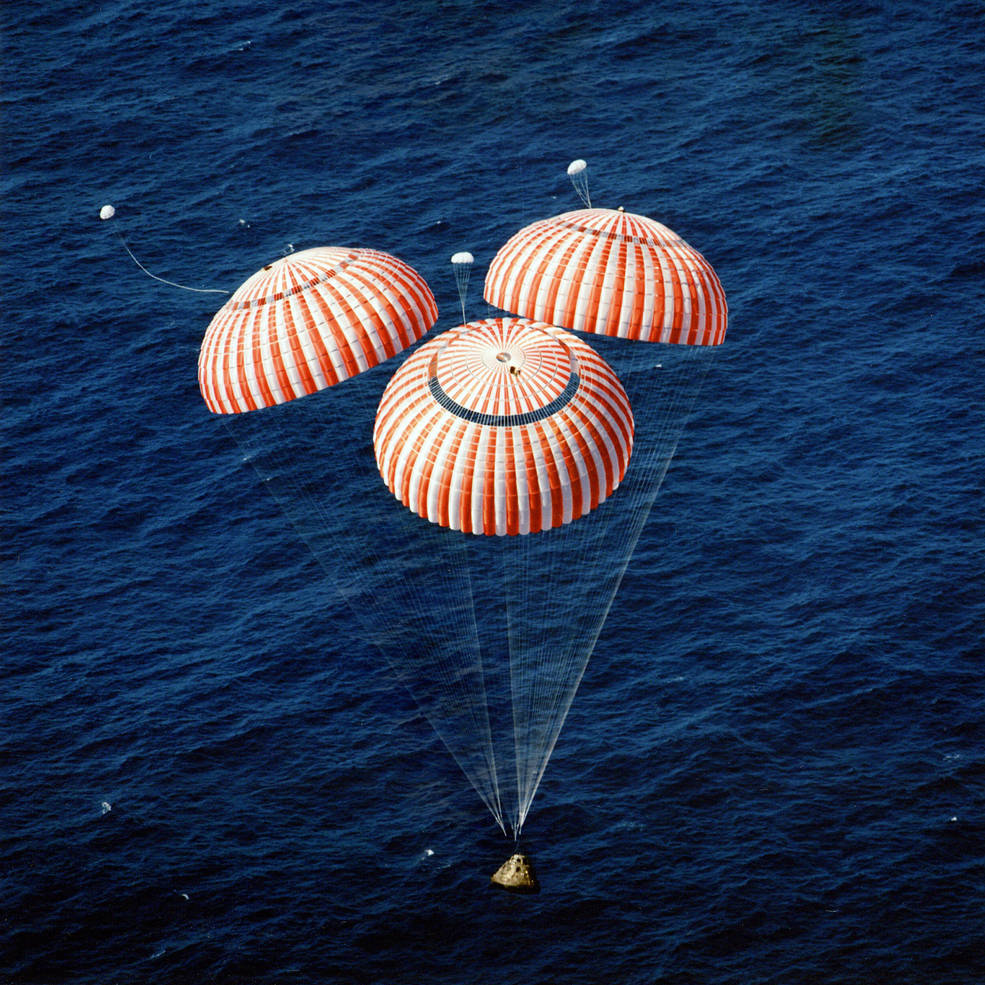
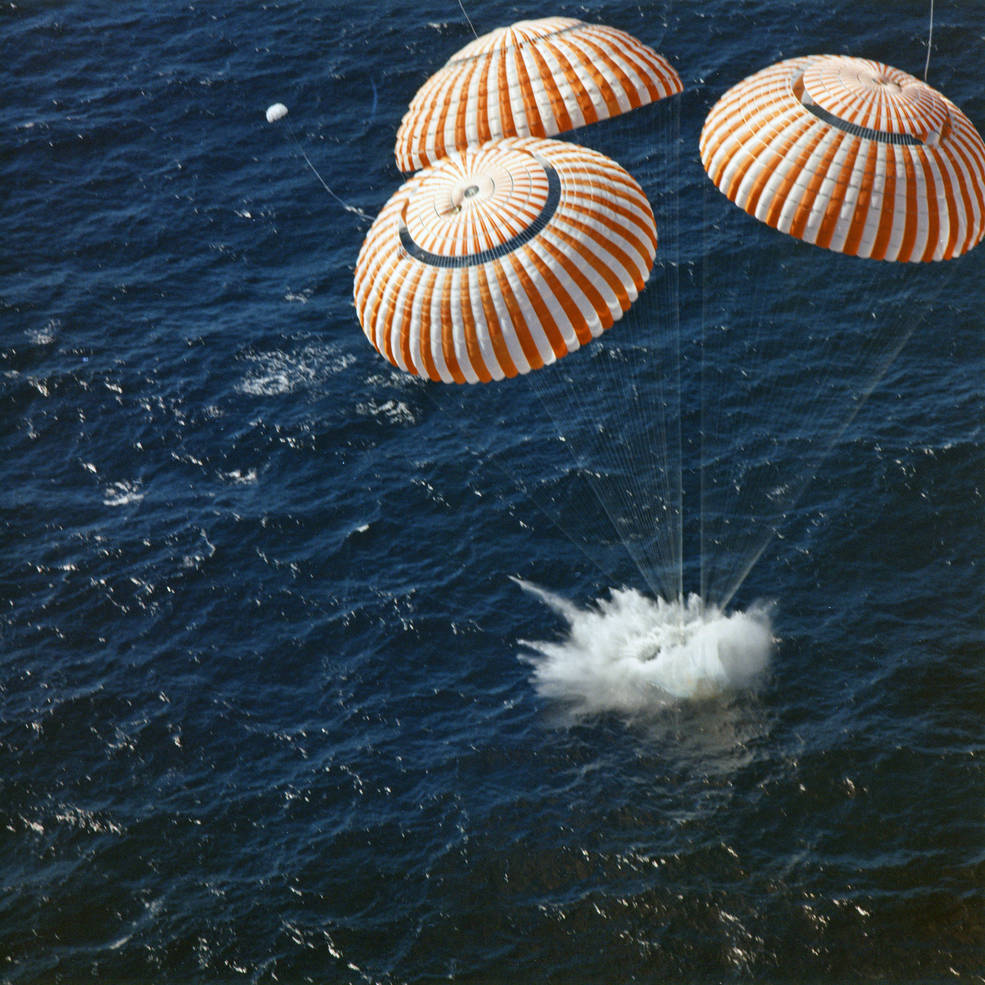
Left: Distant view of Apollo 16 descending on its three main parachutes. Middle: Apollo 16 moments before splashdown. Right: Splashdown of Apollo 16!
Following the radio blackout, Casper jettisoned its forward heat shield, also known as the apex cover, at 24,000 feet to enable the two drogue parachutes to deploy to help stabilize and slow the spacecraft to 170 miles per hour. At 10,000 feet, the three 83-foot-wide main parachutes deployed. Apollo 16 splashed down about three miles from the U.S.S. Ticonderoga and 3.4 miles from the planned target point, after a mission lasting 11 days, 1 hour, 51 minutes. The capsule first assumed a Stable II orientation, with its apex pointing into the water. Three self-inflating balloons righted the spacecraft within four and a half minutes.
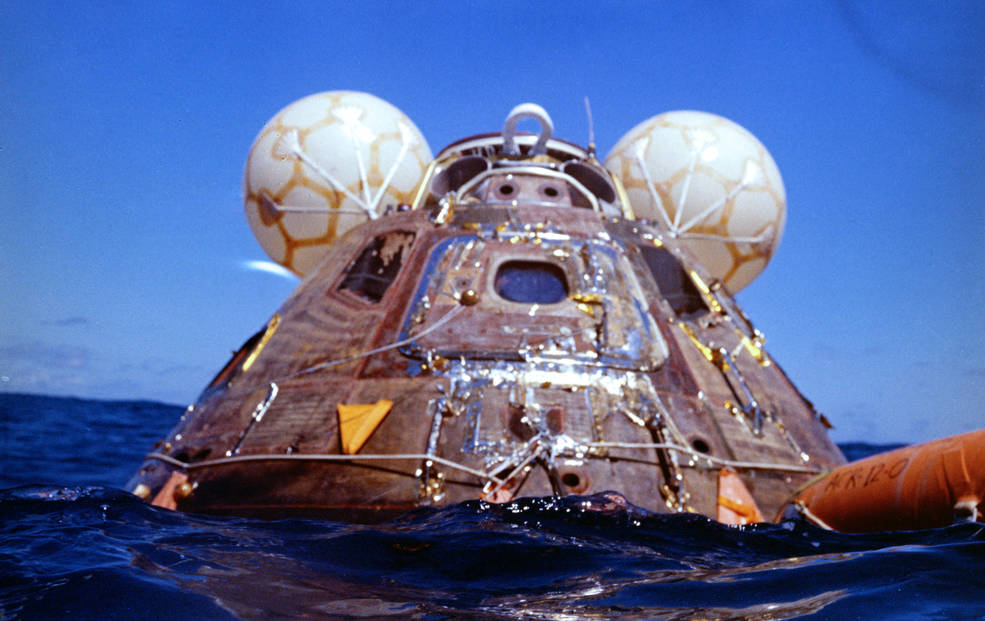
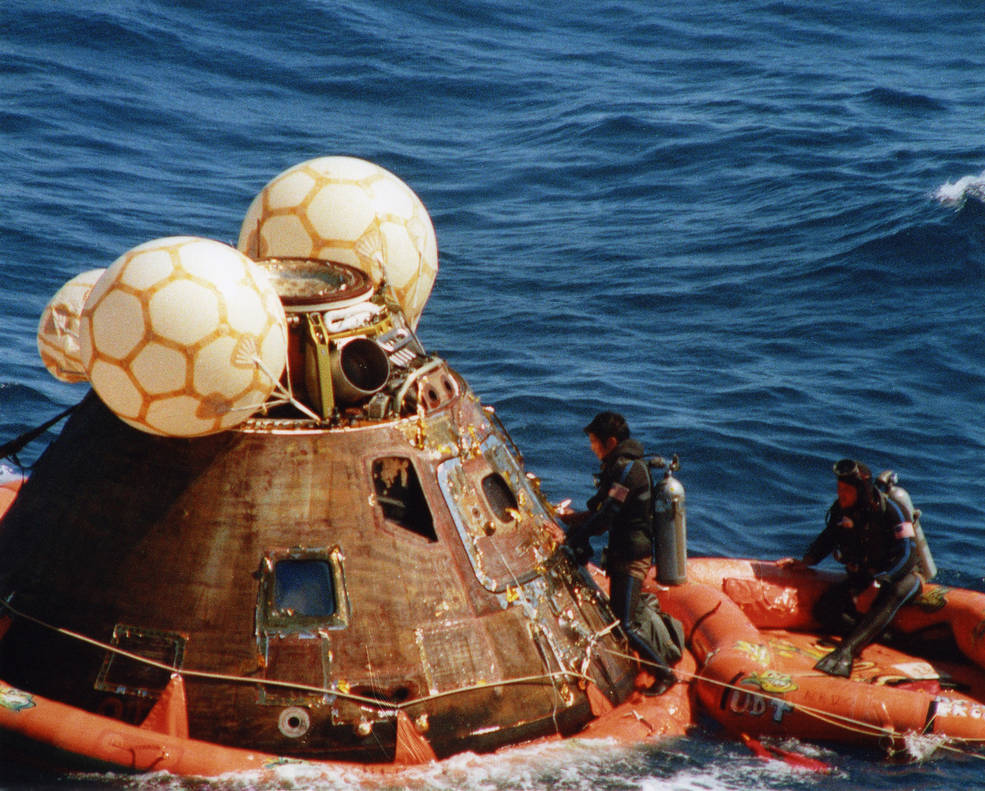
Left: View of the Apollo 16 Command Module taken by one of the recovery swimmers. Right: Recovery team members ready to open the hatch.
Aided by swimmers from Task Force 130, Pacific Recovery Area, Young, Mattingly, and Duke exited Casper onto a life raft. First Duke, then Mattingly, and finally Young were lifted aboard a recovery helicopter and transported to Ticonderoga’s flight deck, arriving 37 minutes after splashdown. On the ship, captain of Ticonderoga Edward A. Boyd, Rear Admiral Henry S. Morgan, commander of the Pacific Recovery Force, and hundreds of cheering sailors greeted them. Young, Mattingly, and Duke gave speeches, thanking the teams at NASA who trained them for the mission and the U.S. Navy who recovered them. In Mission Control, the room filled with not only the flight controllers but many VIPs, and the customary cigars were lit as soon as Young, Mattingly, and Duke emerged from the recovery helicopter and stepped onto the ship’s deck. Sailors retrieved Casper onto Ticonderoga’s flight deck 62 minutes after. The astronauts received their first medical examinations aboard Ticonderoga, with flight surgeons declaring them to be in excellent health after their 11-day trip to the Moon and back. They took showers, participated in celebrations with the ship’s crew, and talked by telephone with President Richard M. Nixon, who congratulated them on their successful mission. They spent their first night back on Earth aboard the recovery ship before beginning their trip back to Houston.
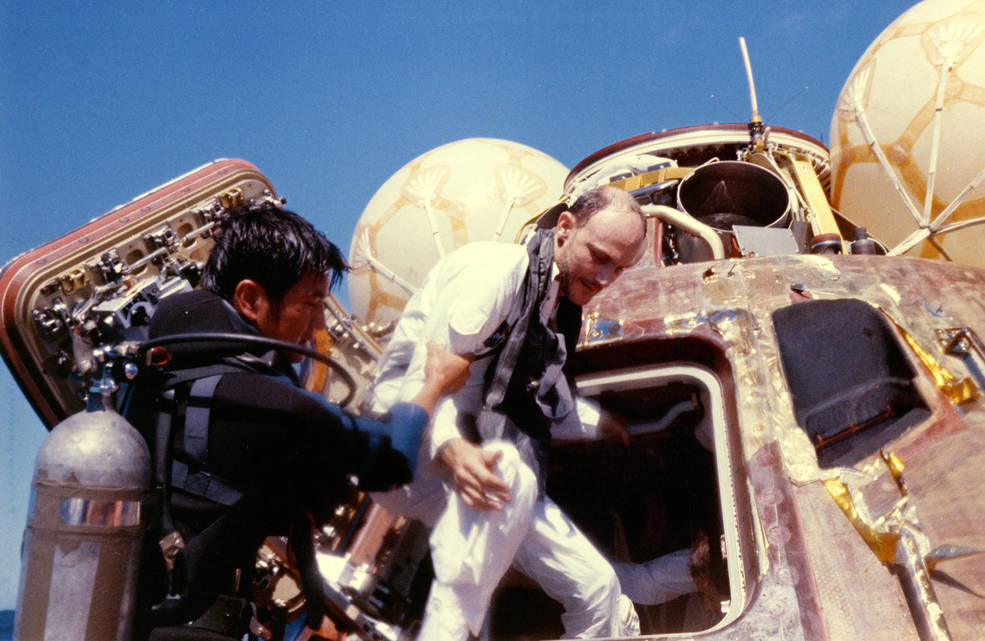
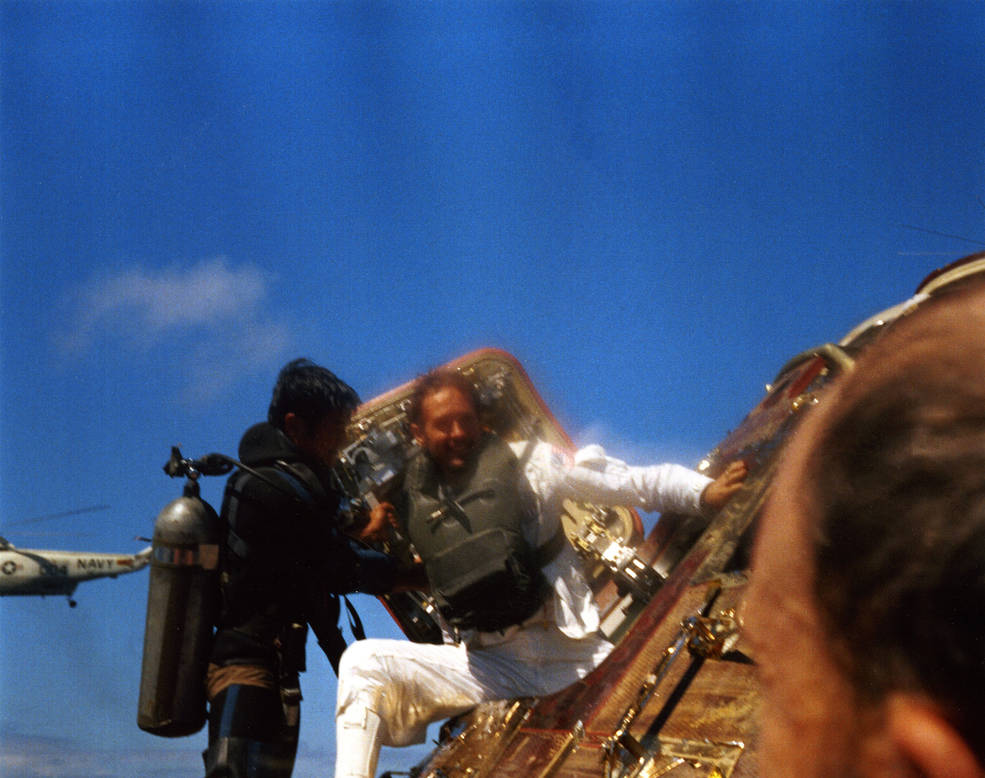
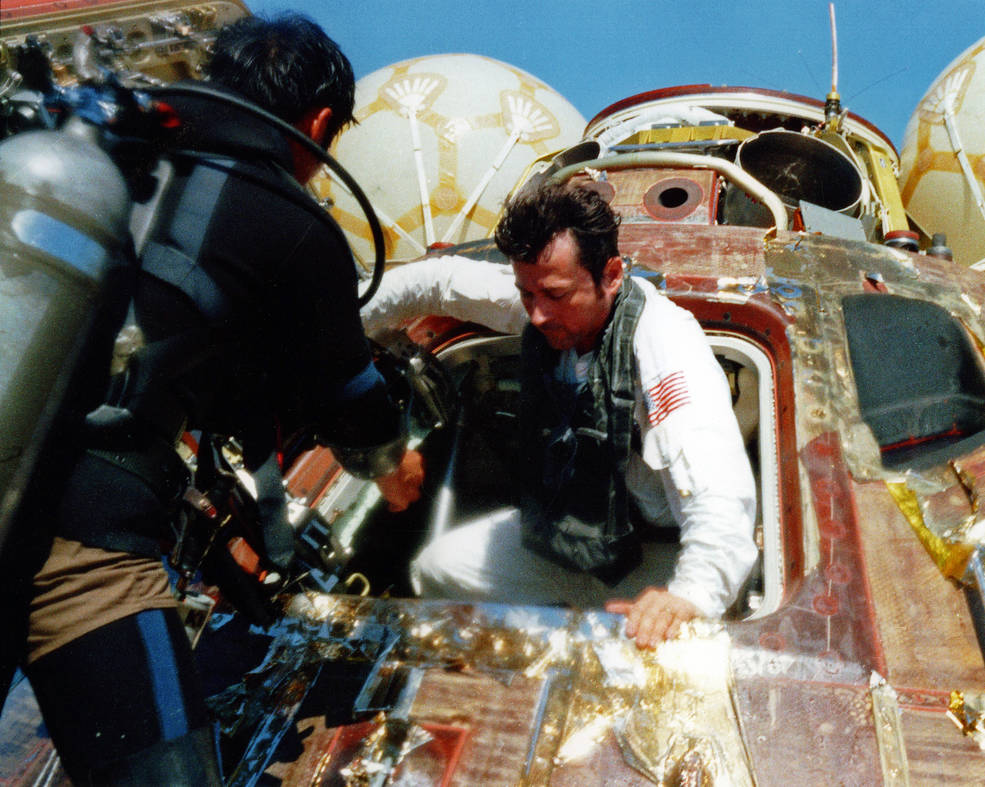
Left: Apollo 16 astronaut Thomas K. “Ken” Mattingly climbs out of the capsule and onto the recovery craft. Middle: Charles M. Duke exits the spacecraft. Right: John W. Young climbs out of the capsule.
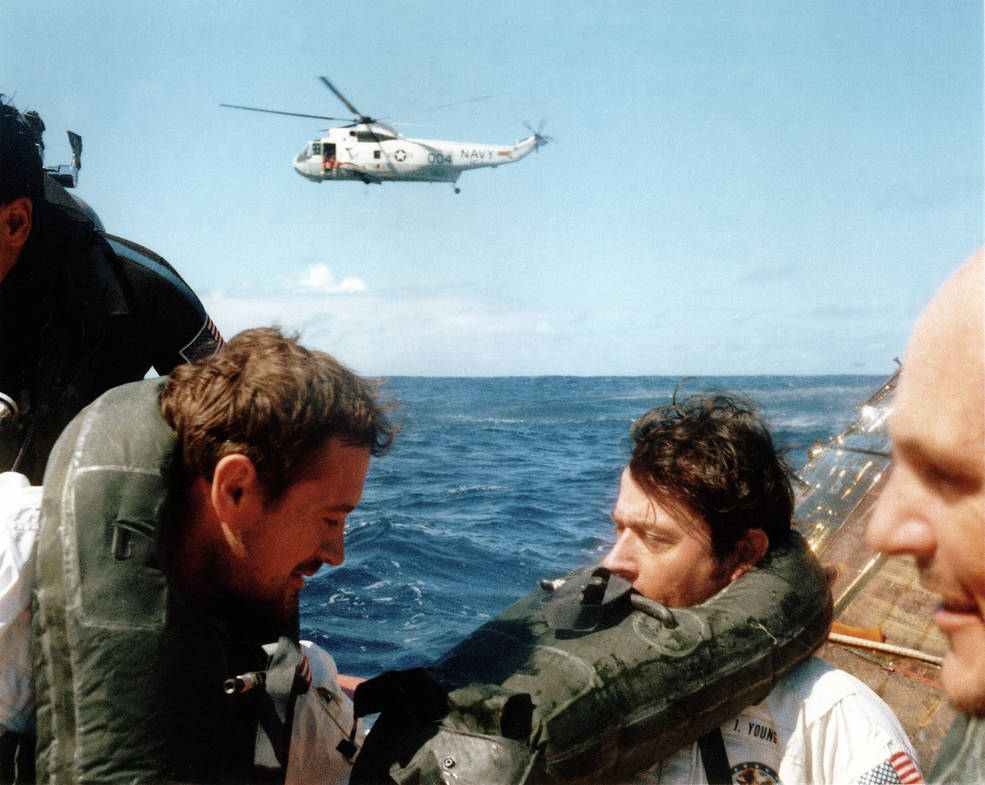
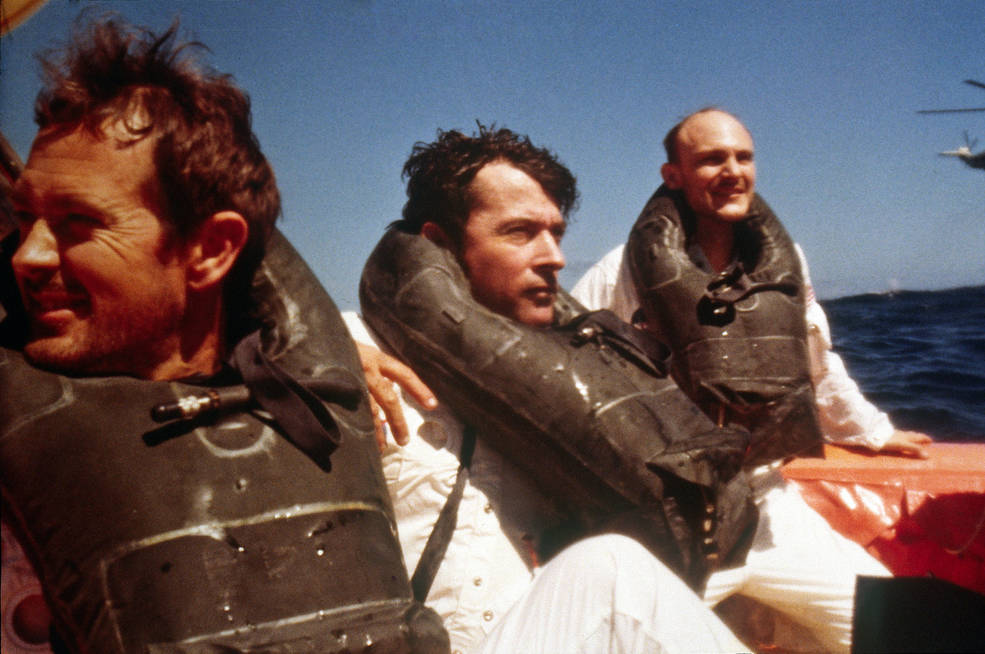
Two views of Apollo 16 astronauts Charles M. Duke, left, John W. Young, and Thomas K. “Ken” Mattingly aboard the recovery raft, awaiting pickup by the recovery helicopter.
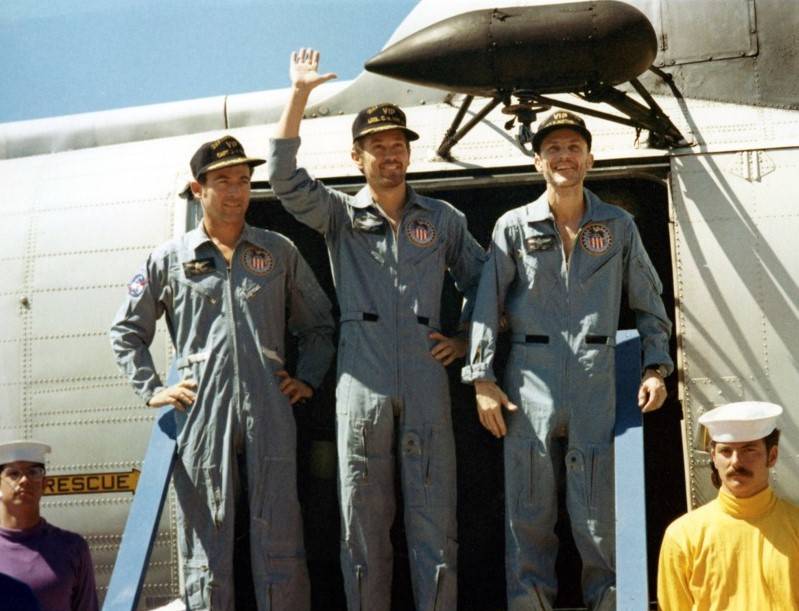
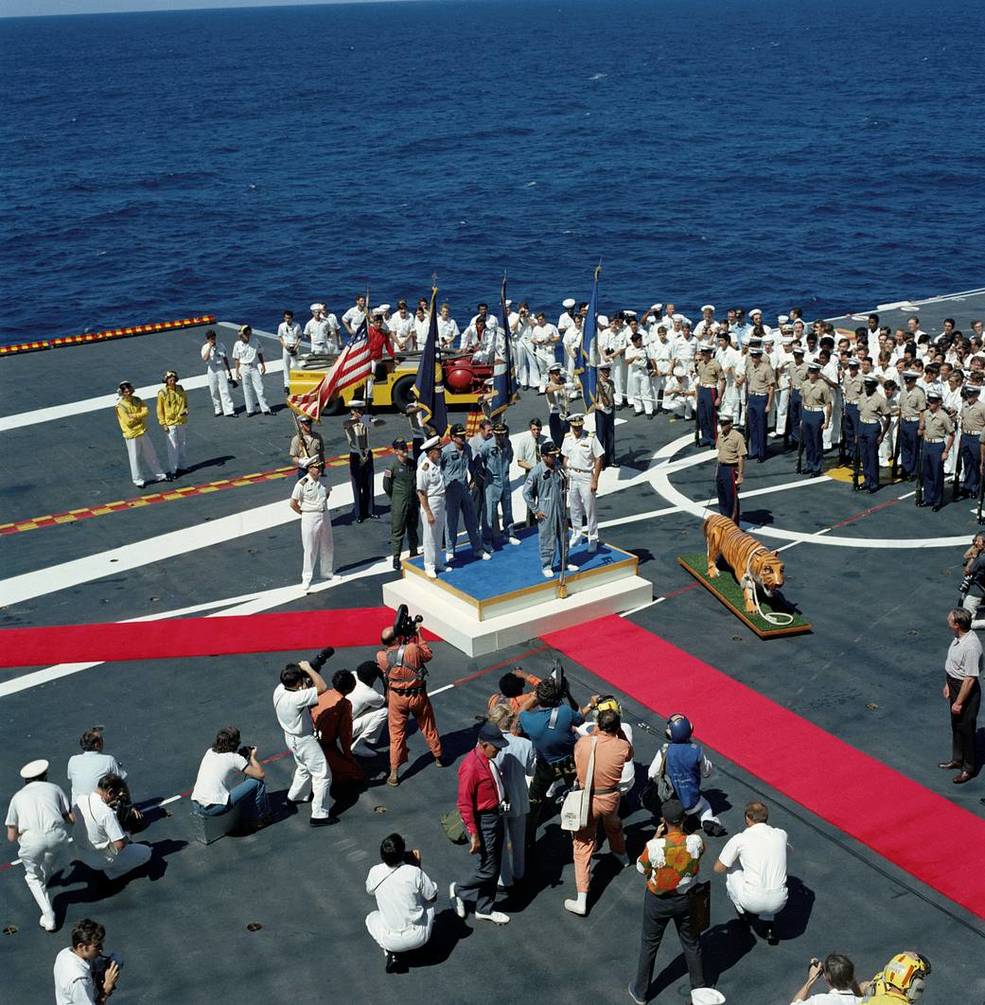
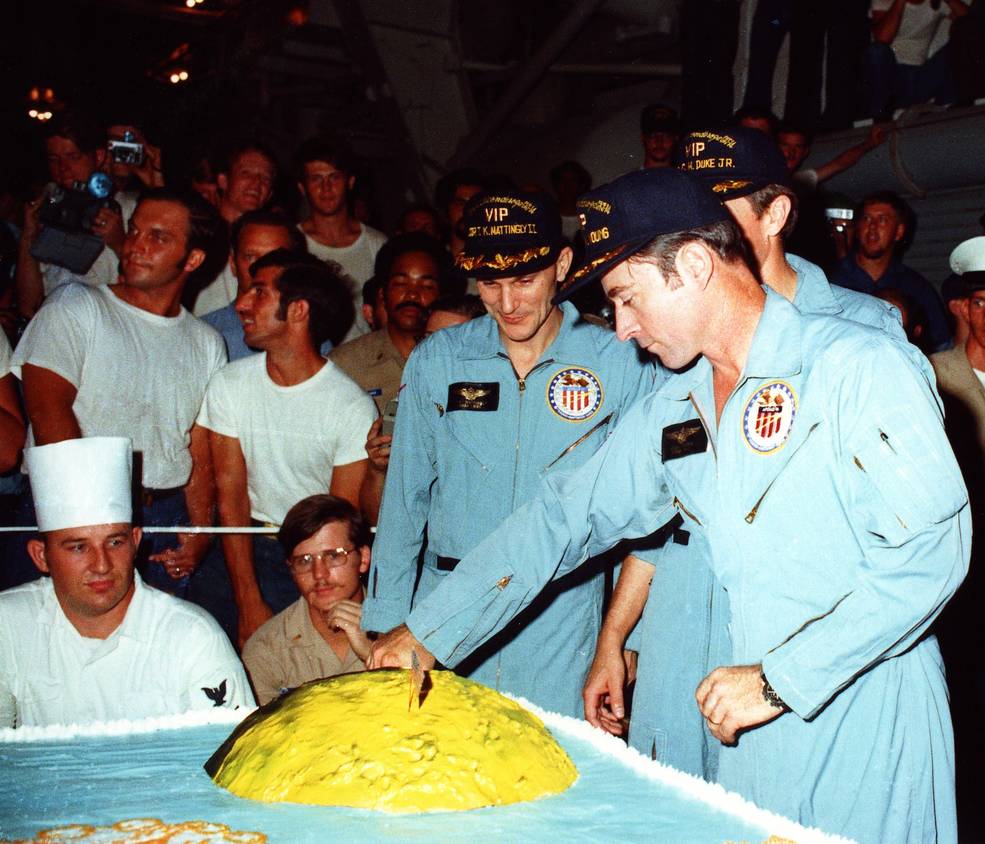
Left: Apollo 16 astronauts John W. Young, left, Charles M. Duke, and Thomas K. “Ken” Mattingly exit the recovery helicopter on the deck of the prime recovery ship U.S.S. Ticonderoga. Middle: The welcoming reception on the deck of the Ticonderoga. Right: Below decks, Young cuts a Moon-shaped cake as Mattingly and Duke, partly hidden, watch.
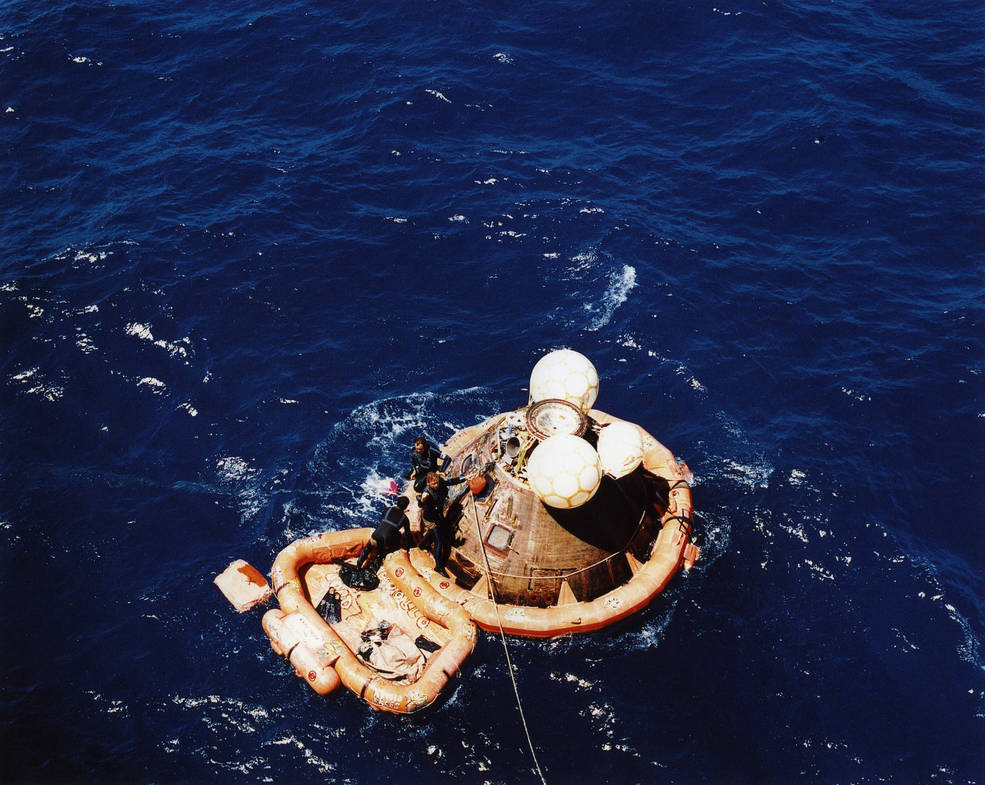
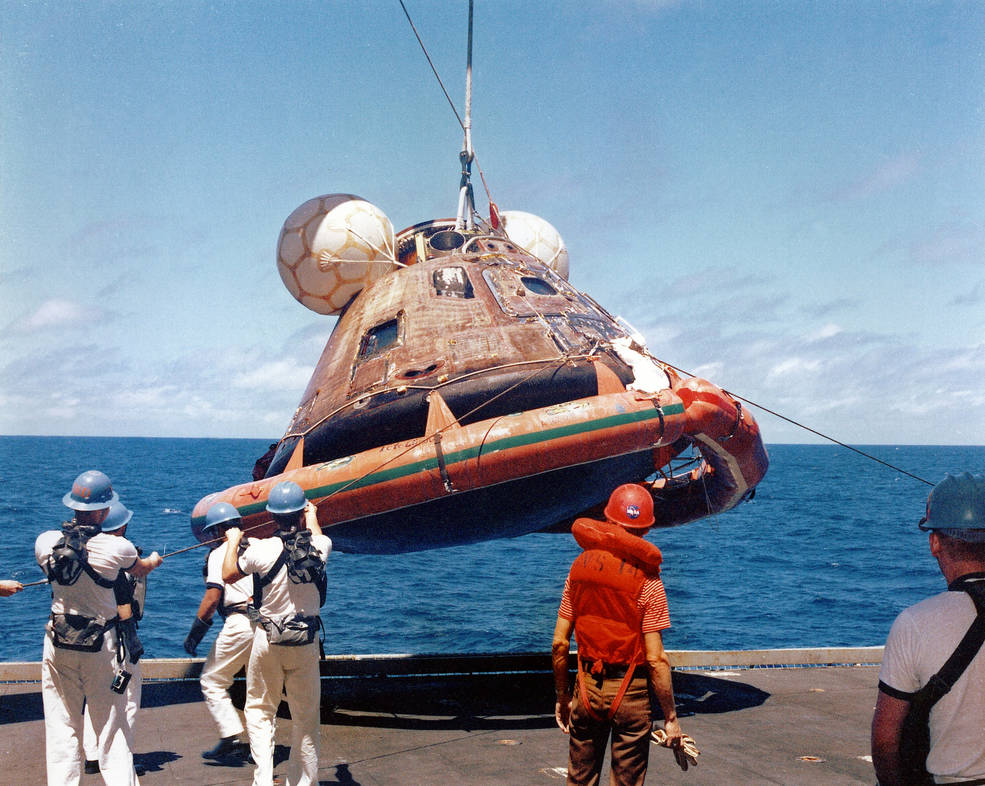
Left: The prime recovery ship U.S.S. Ticonderoga has pulled alongside the Apollo 16 Command Module Casper. Right: Sailors hoist Apollo 16 onto the Ticonderoga.
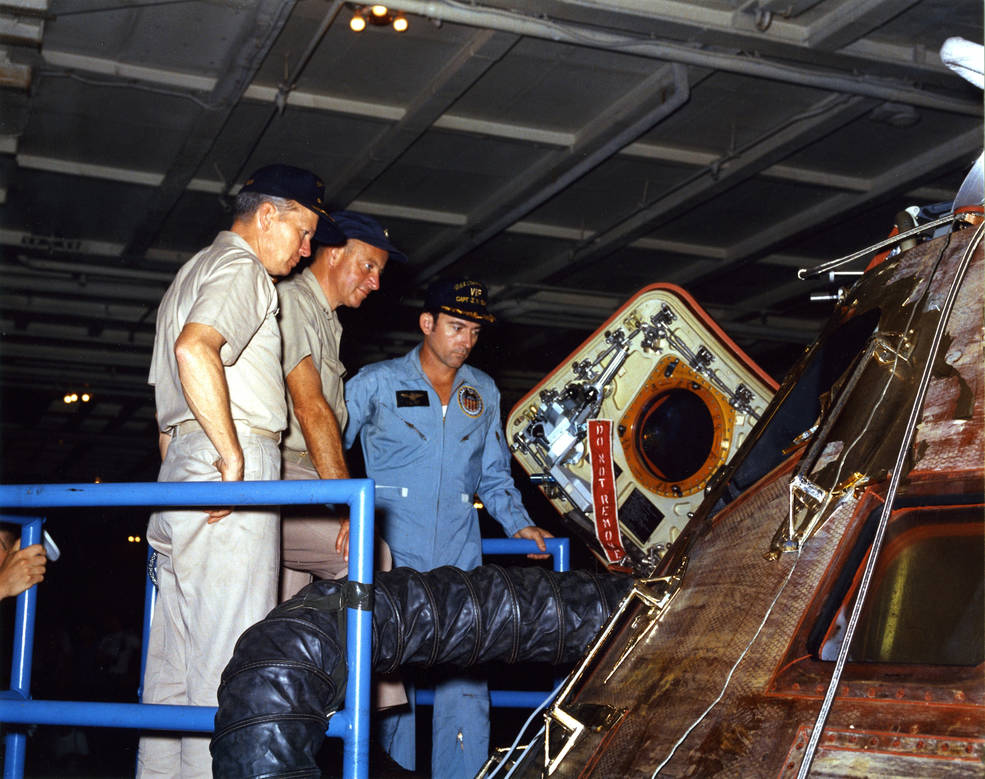
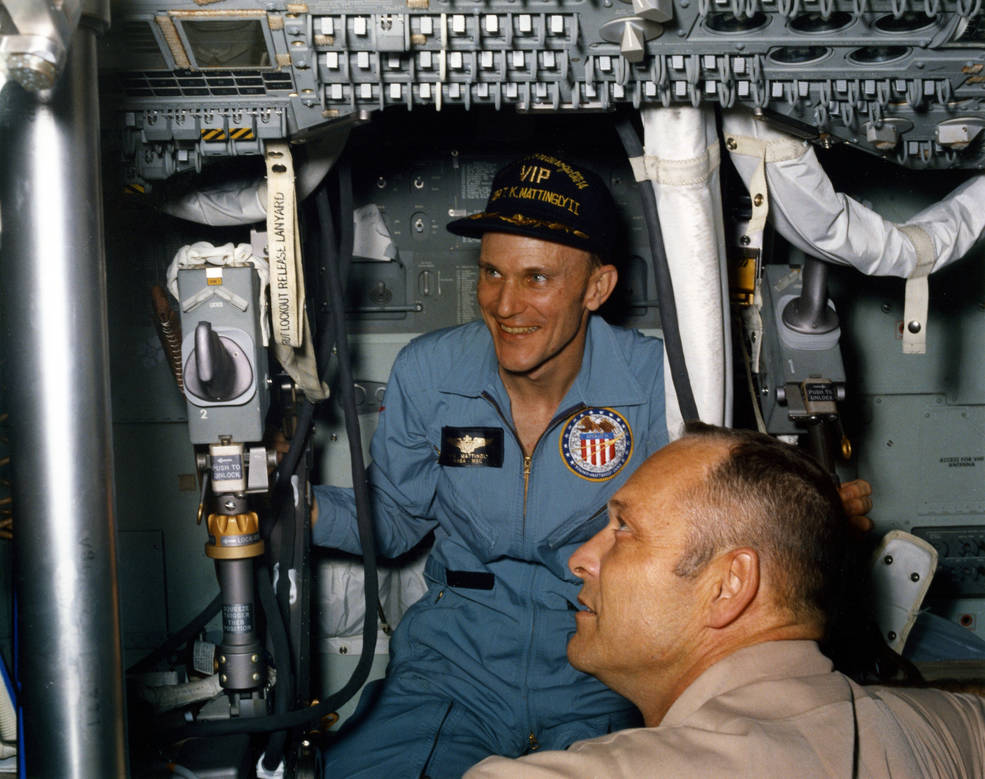
Left: Apollo 16 astronaut John W. Young inspects the Apollo 16 Command Module Casper aboard the U.S.S. Ticonderoga. Right: Thomas K. “Ken” Mattingly inspects Casper after its recovery.
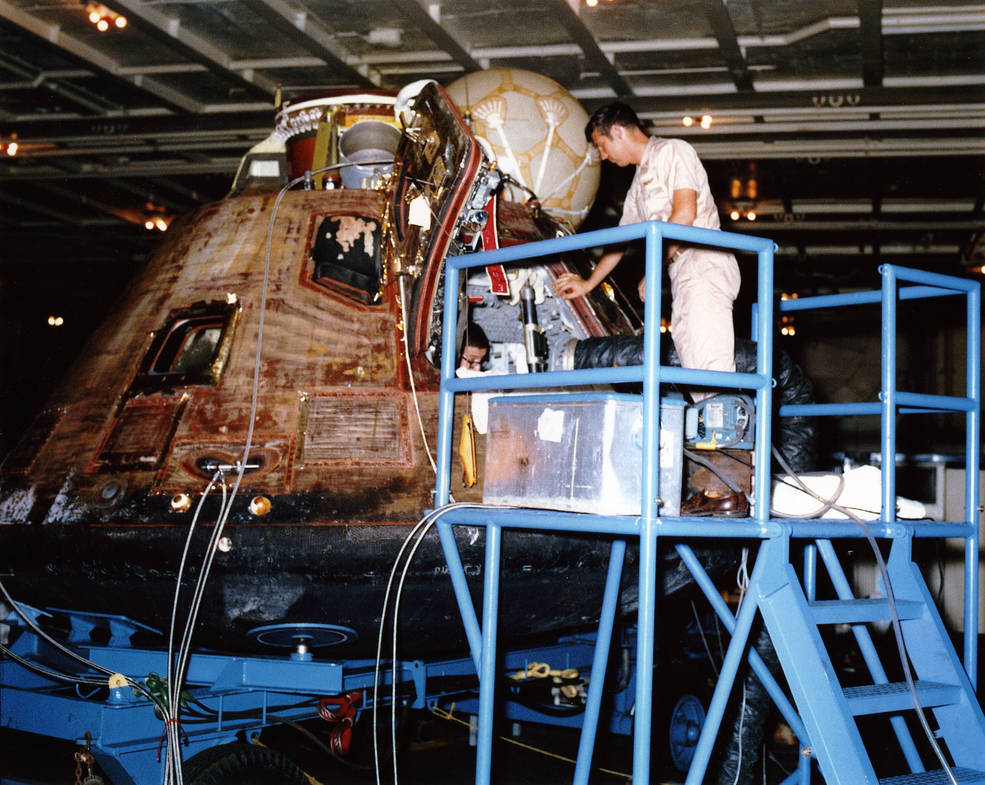
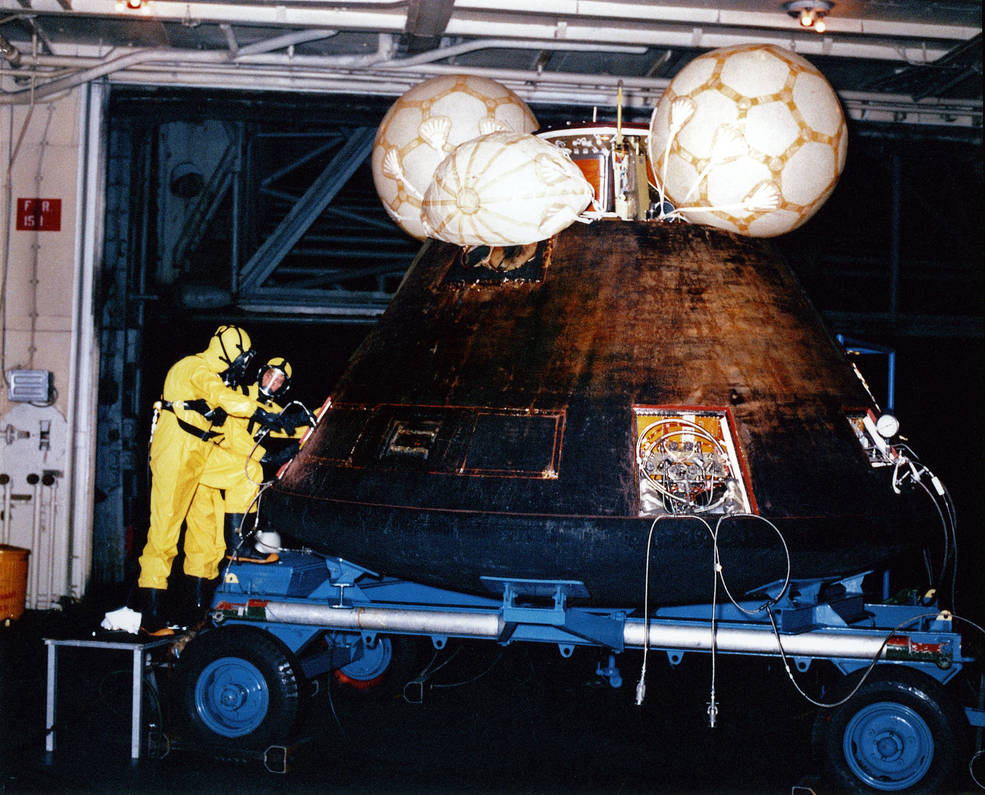
Two views of workmen safing the Apollo 16 Command Module aboard the U.S.S. Ticonderoga following its recovery.

